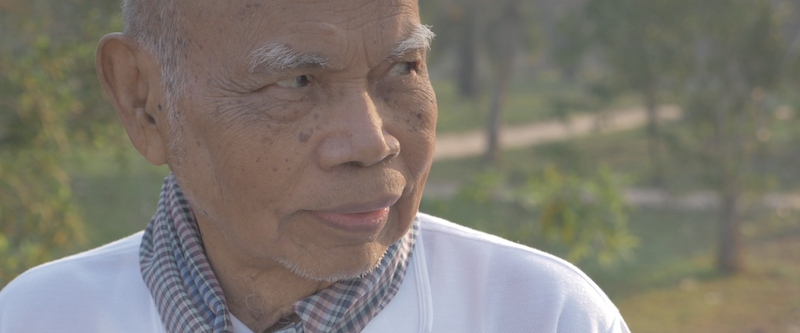“The Man Who Built Cambodia,” an introduction to architect Vann Molyvann’s contributions to Phnom Penh’s design history, begins in silence.
—Film Review—
Driven by visual imagery—staircases and foyers are framed to feature their symmetry and precise design—the film slowly pans over Phnom Penh’s built spaces, in black and white photographs, gentle flyovers and footage of rose-tinged evenings.

The stillness that opens the documentary sets up a contemplation of art and ambition, and at times the filmmakers elevate architecture beyond buildings, depicting the city’s environment as part of the agency of a people—their control over their lives and history.
The silence is also indicative of another facet of the film: At just 37 minutes, director Christopher Rompre necessarily leaves things unsaid about the man and his work, and allows its images to carry the main themes.
Premiering in Phnom Penh on Friday, the documentary is ultimately a story of regret, of an inspired Cambodian architect who built masterpieces across the capital only for many to decay and crumble in the troubled decades that followed.
Mr. Molyvann, born in Kampot province and plucked from obscurity by King Norodom Sihanouk in the 1950s, developed what is known as Khmer New Architecture, a distinct aesthetic that merged modernism with Angkorian and rural traditions. His story leaves the viewer wanting more, another layer deeper into the nuances of the humanity and perspectives of the man, now 90, and his life’s work.
The story of Cambodia’s architecture and Mr. Molyvann’s history is kept simple, touching on the temples of Angkor, the country’s “golden era” of the 1950s and 60s and the tragedy of the Khmer Rouge.
The script itself is mostly uncritical—unquestioning of Golden Age mythology and Mr. Molyvann’s excellence.
It describes Mr. Molyvann’s masterworks—Olympic Stadium, Independence Monument and the National Theater—though little is told of his actual labors in their design.
When the architect is sacked as head of the Apsara Authority, the government’s cultural arm, in the early 1990s, viewers are told that he “wasn’t accepted,” and his chief of staff contends only that he was too straight-talking for politics.

Even the film’s great theme, of ruing a lost era, is underlined by a visual trick: Footage is rewound, a hammer jumps back into a builder’s hand and a boy flies up onto a diving board, suggesting a wordless yearning, as if the viewer may be able to reach back in time.
It’s left, again, to images—an ugly National Theater restoration after a fire—to bring home the point that a sense of care and design has been lost in Phnom Penh.
The best moments are two points of passion. When Mr. Molyvann remembers the completion of Olympic Stadium in 1964, which he considers his life’s greatest achievement, his words are lifted with pride and reminiscence.
Later, when he makes an earnest call for Cambodians around the world to return home, it’s with hope that the people can claw back control over the artistic and intellectual contours of the city.
The film premieres at 7 p.m. on Friday at the Institut Francais. The screening will be followed by a Q&A with Mr. Rompre and producer Haig Balian.



